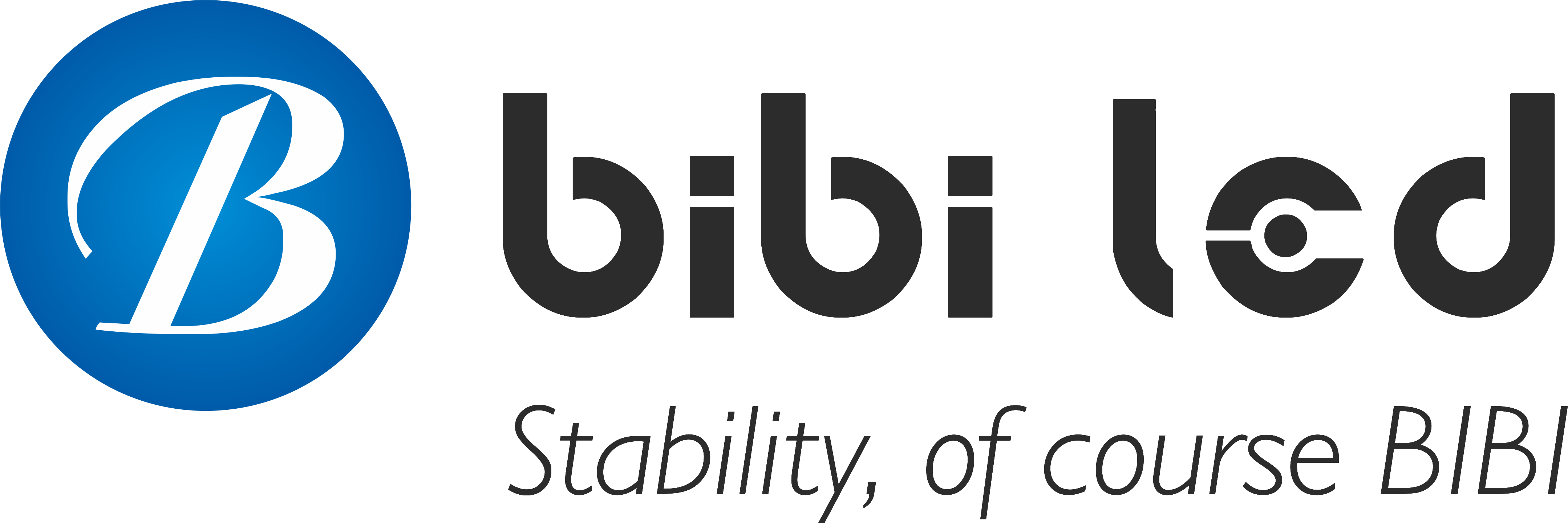مقدمة
With the development of technology, يعرض الصمام have become an essential feature in many government buildings.
They not only improve the efficiency and clarity of information display but also enhance the modernity and functionality of the architecture.
Next, we will explore the advantages of LED displays in حكومة buildings, seeing how they provide more efficient and convenient services to the government while also adding value to the buildings themselves.
جدول المحتويات
1. Advantages of LED Displays in Government Buildings
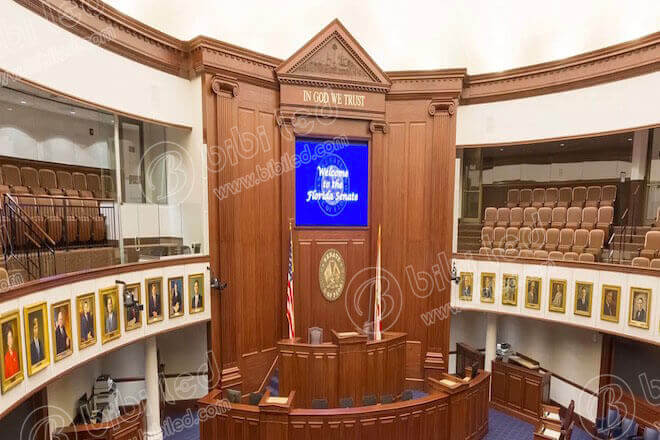
More and more حكومة buildings are now using LED displays. Why? Let’s look at its specific advantages!
1) High سطوع and Clarity
Whether in the glare of sunlight during the day or the dim lighting at night, LED displays ensure that information is clearly visible.
It’s like walking into a government building and seeing the latest announcements, traffic information, weather forecasts, etc., displayed on the LED screen at the entrance—all readily available at a glance.
No more worries about direct sunlight obscuring the display or dim lighting at night, making the information unclear.
2) Durability and Low Maintenance Costs
LED displays have an extremely long lifespan, typically exceeding 50,000 hours!
This means that once installed, routine maintenance is relatively hassle-free, with a long service life and low costs.
For venues requiring long-term, high-frequency information display, such as government halls or large street displays, LED displays are simply the best choice for being both worry-free and cost-effective.
3) Flexibility and Multifunctionality
LED displays are much more than just static bulletin boards. You can use them to display real-time information, videos, emergency notices, and even update content immediately in the event of major news or weather changes.
Imagine an LED screen instantly displaying the latest weather warnings or traffic accident alerts in an emergency, ensuring everyone receives crucial information immediately. This flexibility is truly incredibly practical.
4) Aesthetics and Modernity
LED displays are not only useful but also very attractive! Their modern appearance adds a touch of technology to government buildings.
For example, LED screens on the exterior of government buildings not only display announcements but also make the buildings look more vibrant and better match the image of a modern city.
It serves both as a decorative element of the building and as a source of important information updates when needed.
This design that combines aesthetics and practicality is truly a major plus.
2. How Do LED Displays Enhance the Functionality of Government Buildings?

LED displays are more than just eye-catching decorations; they play a significant role in enhancing the functionality of government buildings.
LED displays act as “super assistants” for information dissemination. Important information such as government announcements, policy interpretations.
And meeting notices can be displayed in real time on LED screens, allowing citizens to stay informed.
Whether it’s public service information or announcements about citizen participation activities, LED screens can use vivid images and text to make information dissemination more efficient and intuitive, further enhancing public participation and the right to know.
The advantages of LED displays become particularly evident during emergencies.
For example, in the event of natural disasters, traffic accidents, or other emergencies in the city, LED screens can quickly transmit critical information such as emergency notices and evacuation guidelines, helping citizens react promptly and ensuring public safety.
Whether it’s large screens on the streets or small LED displays in government buildings, real-time emergency information can reach the widest possible audience immediately, avoiding the risks associated with information delays.
LED displays are not only information display tools; they can also interface with other intelligent systems to become real-time data display platforms.
For example, they can display urban traffic conditions, public facility usage, and environmental monitoring data.
Real-time display of this data helps decision-makers quickly obtain information and improve decision-making efficiency.
Imagine city traffic flow, public transportation punctuality, and even the utilisation rate of parks and public facilities, all presented to government staff in real time through LED screens, helping them make more accurate decisions.
The flexibility of LED displays allows for their widespread application in government buildings.
Whether in lobbies, corridors, meeting rooms, or public rest areas, LED displays can provide different types of display functions. In lobbies, they can display corporate culture and important notices.
In corridors, they can display real-time news and departmental announcements; in meeting rooms, they can be used for information reporting and video conferencing.
Their multi-scenario applications make the entire office environment more efficient and vibrant.
LED displays are not only tools for displaying information; they can also enhance interaction with citizens.
By using touchscreens or scanning QR codes, citizens can quickly access the service information they need, such as understanding policy interpretations, booking public services, and viewing relevant procedures.
Citizens only need to touch the screen or scan a QR code to quickly obtain the information they need or handle related matters, improving the efficiency of public services and enhancing citizen participation.
3. Specific Application Scenarios of LED Displays in Government Buildings
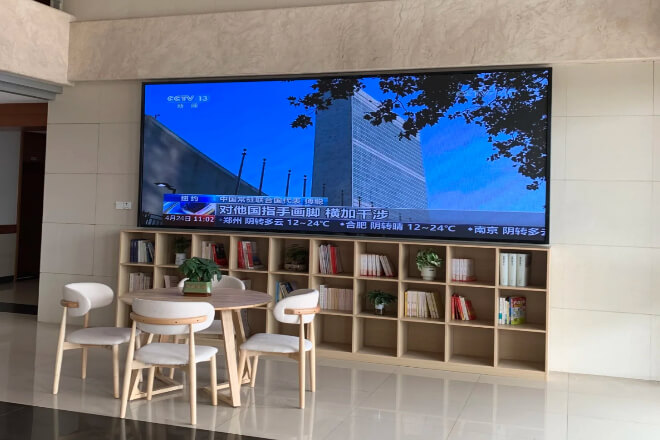
1) Government Hall and Reception Area
Upon entering the government building, the first thing citizens see is the content displayed on the شاشة ليد, such as welcome messages, the latest announcements, or event schedules.
This allows citizens and visitors to immediately know what activities are happening today or policy notices they need to pay attention to.
For example, when citizens enter the hall, the screen may automatically display the day’s working hours, special events.
Or an urgent notice, preventing them from missing important matters due to information delays.
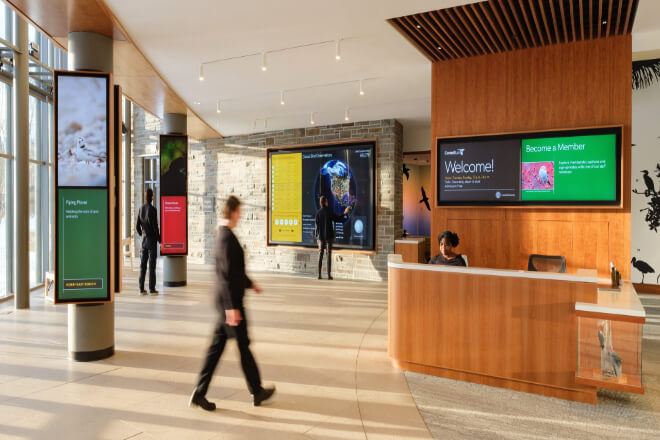
2) Citizen Service Centre
In the citizen service centre, LED displays become “helpers.” When you go to handle matters, the LED screen will display queue information, telling you where you are in the queue and how many minutes are left to wait.
It can even display the processing progress, letting everyone know how long it will take to complete their tasks.
Eliminating the anxiety of waiting, saving time, and making the entire service experience smoother.
If a window is overwhelmed, the screen will remind everyone to go to another window, reducing unnecessary queuing time.

3) Meeting and Training Rooms
LED displays truly shine in meeting rooms and training rooms! They are not just a display tool, but a powerful assistant ensuring the smooth running of meetings.
During meetings, LED screens can clearly display data, charts, and important documents, allowing participants to easily see the core content of the discussion.
If there are training courses, the screens can also play training videos or showcase interactive elements, enhancing employee learning interest.
Information in meetings and training sessions is readily available, allowing everyone to focus more on the content rather than the hassle of searching for documents or materials.
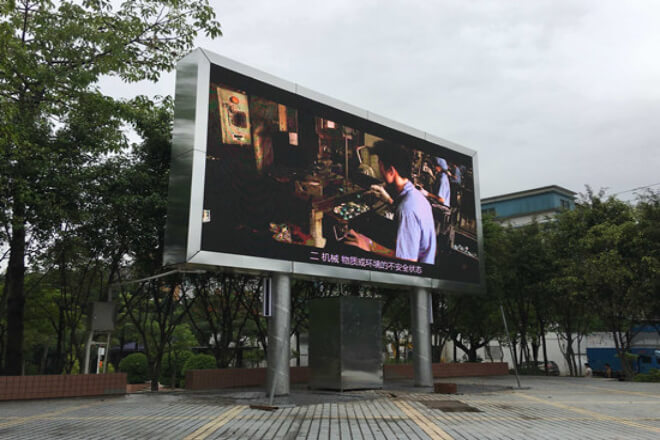
4) Facades and Billboards
The application of LED displays on building facades not only makes buildings look modern but also allows for the display of city culture, events, or important notices on the exterior of buildings.
For example, during holidays, LED screens can play short videos about the city’s history or display promotional information for community events.
Whether day or night, the constantly updated information on the screens attracts the attention of passersby, transforming government buildings from “cold” offices into windows showcasing urban culture.
5) Public Activities and معرض Spaces
LED displays are also highly flexible in their application in public activities and exhibition spaces.
They can not only display the city’s history and culture or play promotional videos for government activities, but also engage citizens through interactive elements.
For example, in city exhibitions or forums, LED displays can show real-time data and traffic information relevant to citizens’ lives, or allow citizens to learn more about the event by scanning a QR code.
In this way, people can not only see information but also actively participate in the activities, increasing interactivity and engagement.
4. The Social and Cultural Value of LED Displays in Government Buildings
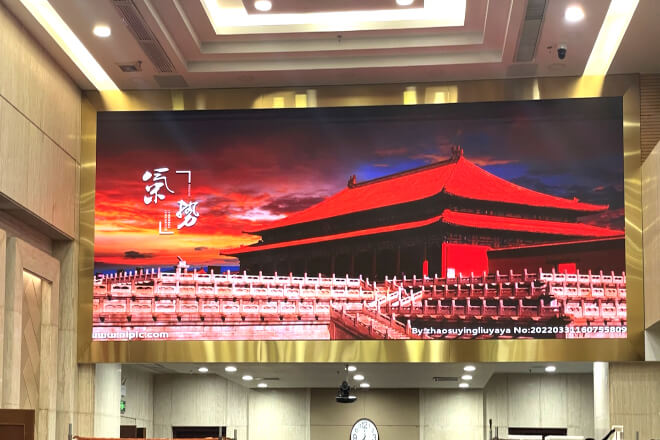
1) Enhancing Government Transparency
If government work is as opaque as a “black box,” people will naturally have doubts.
However, through LED displays, government activities, policy progress, and work results can be displayed to the public in real time.
Imagine citizens walking into a government building and seeing information on the latest policies, work progress, and upcoming public events displayed on screens.
This is convenient and intuitive, increasing public trust in the government’s work.
Transparent displays, visible to everyone, naturally enhance public trust in the government.
2) Promoting Public Participation and تعليم
LED displays can not only broadcast news but also convey public welfare activities, cultural information, and educational resources, functioning as a digital public service platform.
For example, during environmental protection activities or health promotions, LED screens will display relevant content, reminding citizens to pay attention to the environment and participate in volunteer services.
This interactive information dissemination not only informs citizens about more social activities but also actively encourages participation, fostering a stronger public welfare atmosphere in the city.
It makes information dissemination more efficient and citizen participation more proactive.
3) Shaping a Modern حكومة Image
The modern feel of LED displays makes government buildings look more like a “high-end technology center,” rather than just a cold administrative building.
It allows the government to not only handle affairs but also disseminate urban culture and a sense of technology.
For example, urban cultural activities, historical background, and even festival celebrations can be dynamically displayed on LED screens, allowing everyone to feel the city’s warmth and vitality.
Through these high-tech display methods, citizens will feel, “Wow, the government is so stylish and down-to-earth!”—which also helps improve public trust in the government.
4) Enhancing Public Interaction and Services
LED displays are no longer just simple display tools; they are also interactive platforms for citizens to access services.
For example, citizens can quickly obtain the information they need, such as the latest progress of government services, procedures, or event registration, through QR codes or touchscreens.
This way, people no longer have to wait in long lines, and all service information can be easily obtained.
This direct and convenient interactive method makes the connection between citizens and the government closer and greatly improves the efficiency and quality of services.
5. How do LED displays help government buildings save costs and improve efficiency?
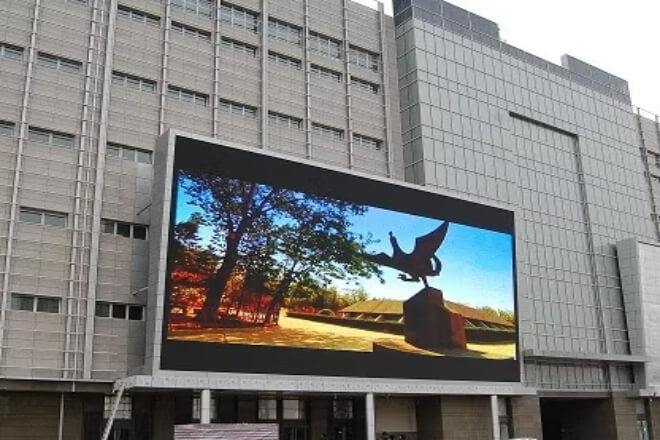
1) Long-term Energy Saving Benefits
Compared to traditional display devices, LED screens consume significantly less energy.
You might think that such a large screen would consume a lot of electricity, but in reality, LED displays use high-efficiency light sources, consuming only a fraction of the electricity of traditional display devices.
This means that, over the long term, electricity bills for government buildings will be significantly reduced, resulting in substantial savings.
For public areas requiring long-term information display, LED displays are a highly energy-efficient option.
2) Reduced Costs of Paper Publicity
Imagine that paper leaflets and posters in government buildings, which used to require constant replacement, can now be updated with a single click on an LED display.
This not only avoids the waste of traditional printing paper but also saves on printing and labour costs.
The production and replacement of these paper materials typically require time and expense, while LED screens only require simple content updates, saving both time and money.
Furthermore, the content on LED displays can be adjusted as needed, preventing outdated or repetitive poster content from being wasted.
3) Improved Efficiency and Transparency
The application of LED displays can greatly improve the efficiency of information delivery, especially in public information displays.
Government departments can use LED screens to display announcements, policy updates, and city news in real time, reducing the need for manual delivery.
For example, citizens can use LED screens to learn about the latest queuing information, policy changes, and event schedules, reducing the need for manual services and paper materials.
Increased transparency in information display allows citizens to better understand the progress and content of government work, reducing communication errors and duplication of effort, and indirectly lowering management costs.
4) Advertising and Sponsorship Revenue
You might not realise that LED displays can not only save costs but also generate additional revenue.
LED displays in government buildings are not just for displaying announcements and information; they can also host external advertising.
For example, the government can play advertisements during off-peak hours to attract nearby businesses or brands to advertise.
Whether it’s advertising by local businesses or promoting cultural activities, LED displays can serve as a source of revenue, helping government buildings generate additional financial support.
This extra revenue can effectively offset operating expenses and support the implementation of other public projects.
6. الخاتمة
In summary, LED displays are not just an information display tool; they are multifaceted tools for enhancing the functionality and aesthetics of government buildings
From real-time information dissemination to emergency announcements to enhancing the government’s image and increasing advertising revenue, LED displays bring more possibilities to government buildings.
They not only make buildings more intelligent and modern but also provide new ways for governments to save costs and improve efficiency.
Finally, if you would like to learn more about LED displays, يرجى الحصول على اتصال معنا.
